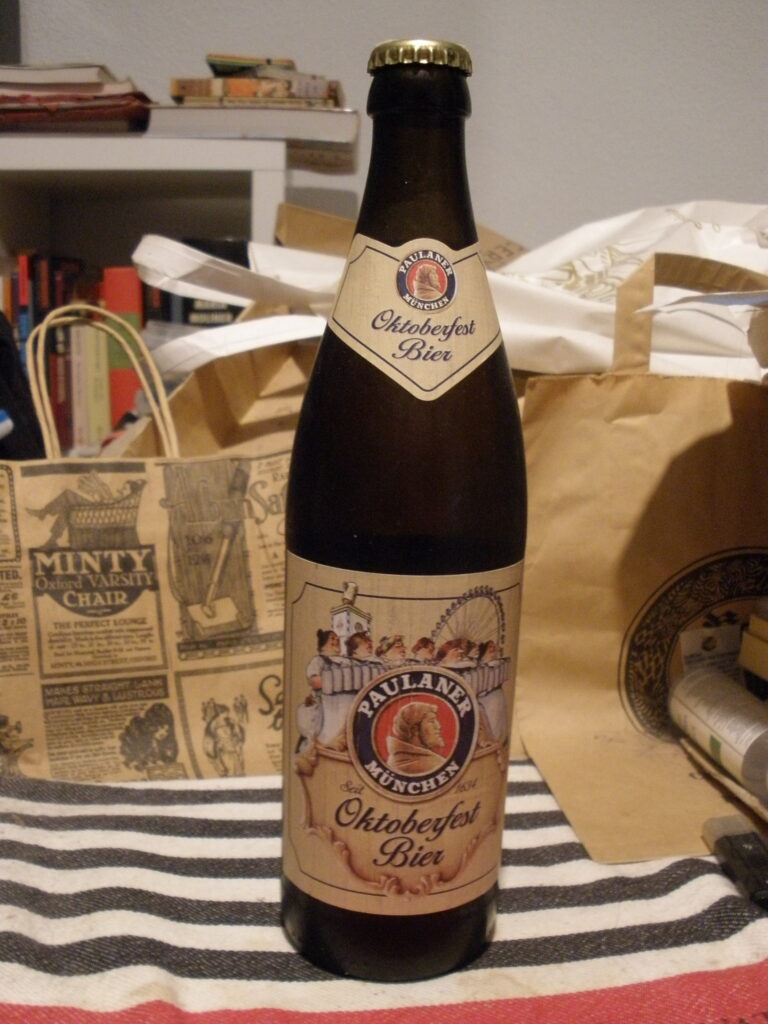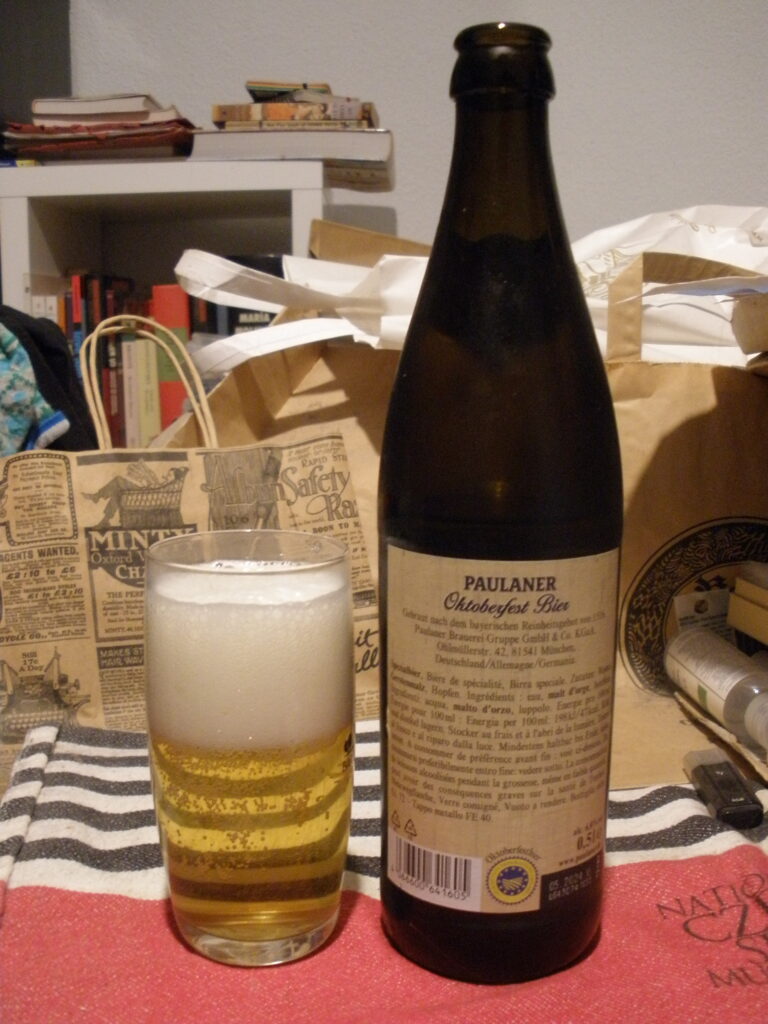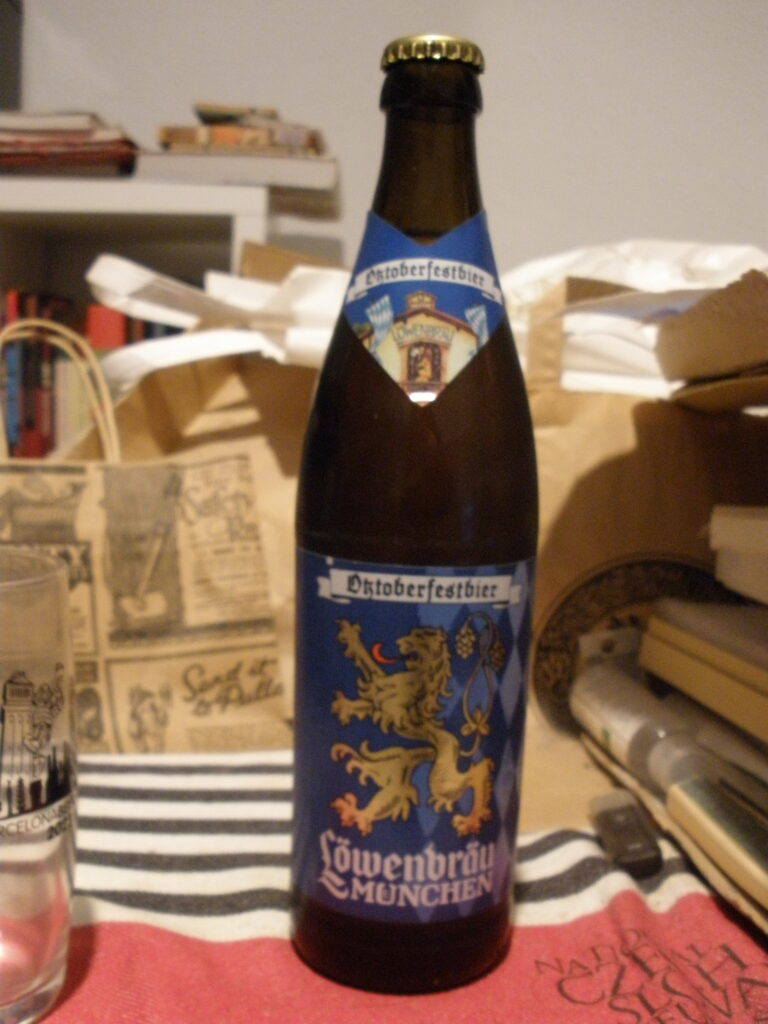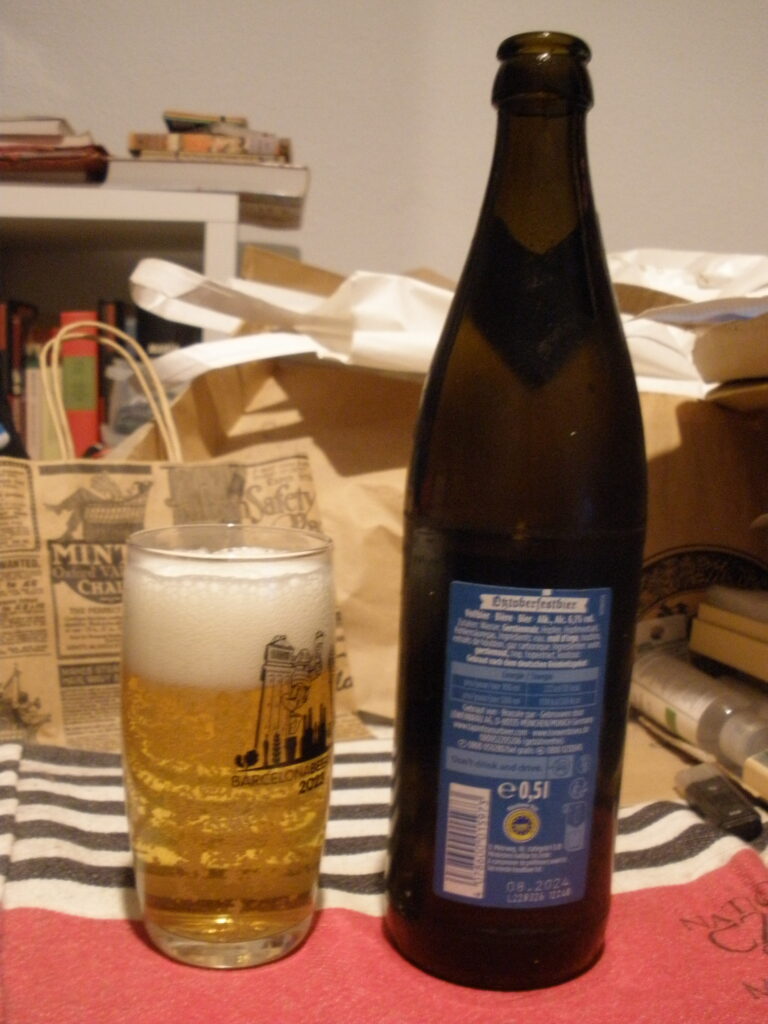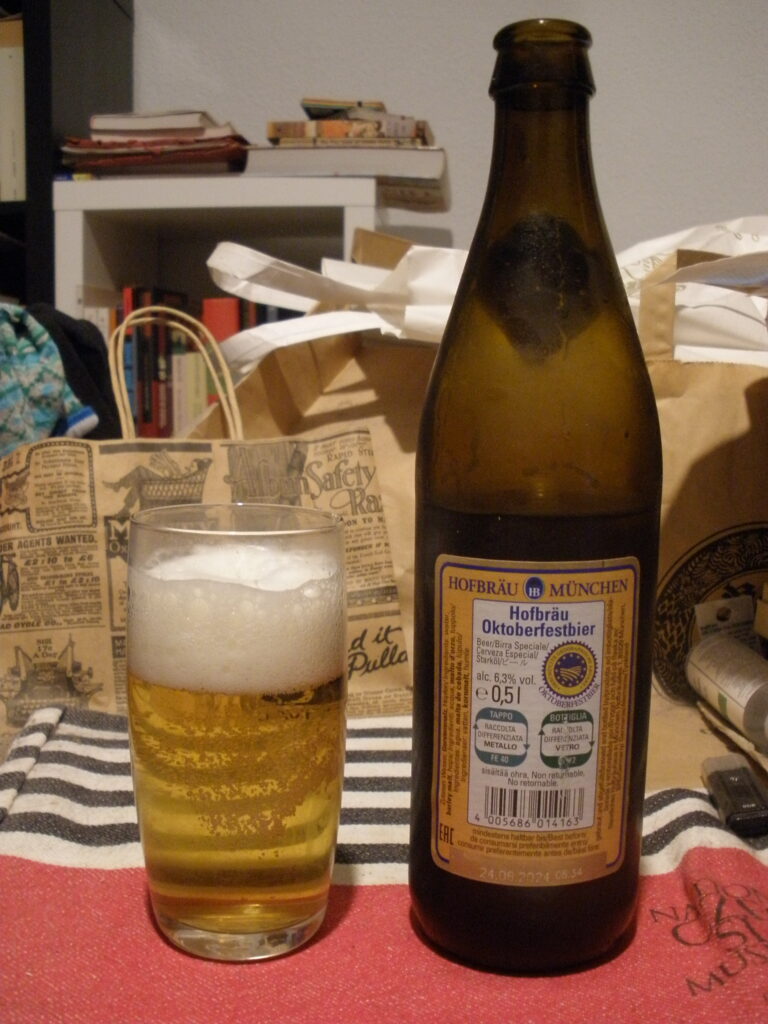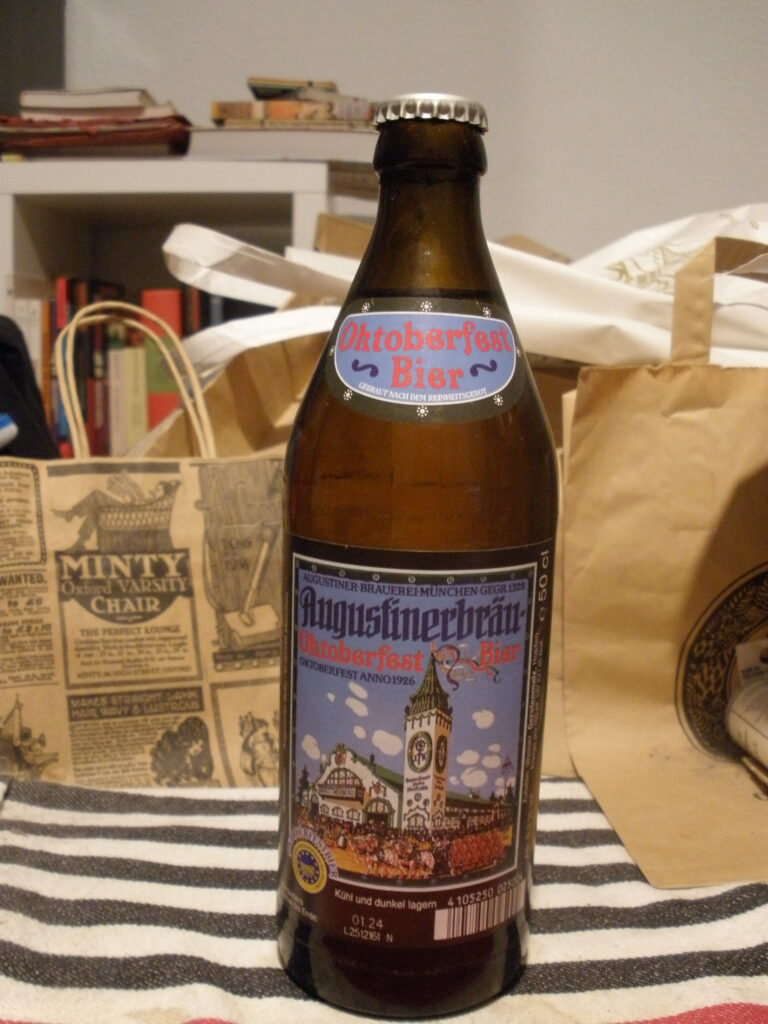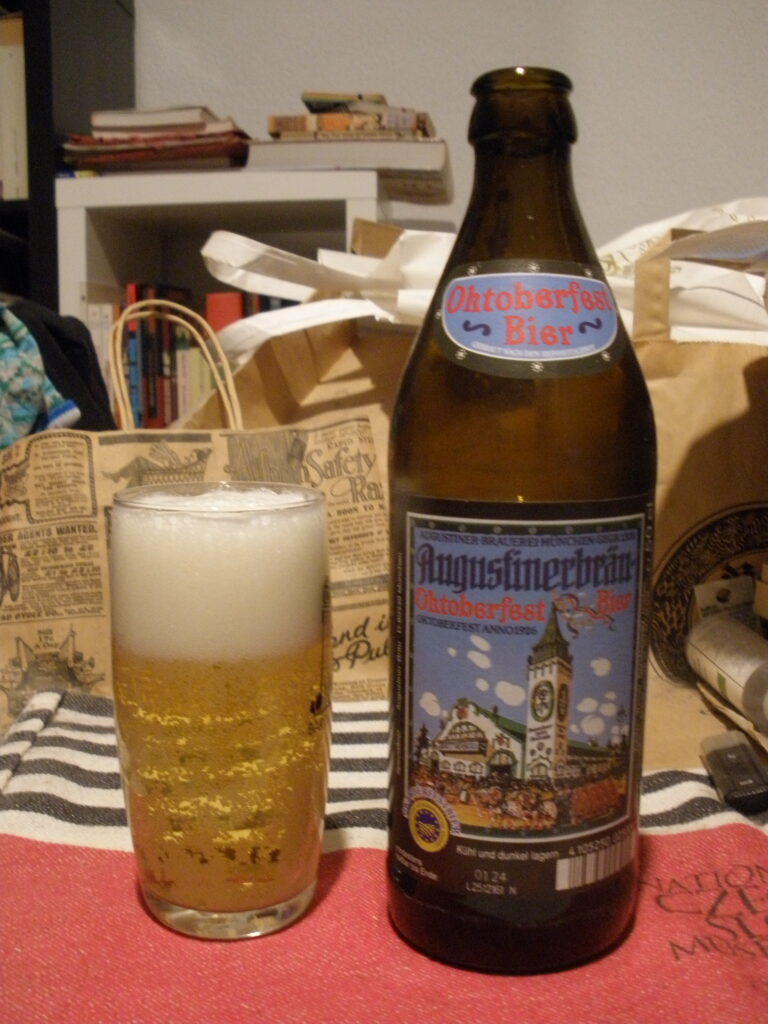nicht zu spät
Oh, the last beer of Oktoberfest, how quickly you come! I saved Spaten for last, which I might be thankful for, if it’s anything like their bock. Spaten is one of the oldest of the Munich breweries allowed to participate in Oktoberfest, with records from the end of the 14th century. The name comes from it’s 17th century owners and it has had a slow but steady growth over the years, to finally merge with Löwenbräu in the 1990s after a merger with Franziskaner earlier in the century. They are now under the wing of AB InBev, which certainly helps their availability, and at least with Spaten Bock still leaves a delightful beer.
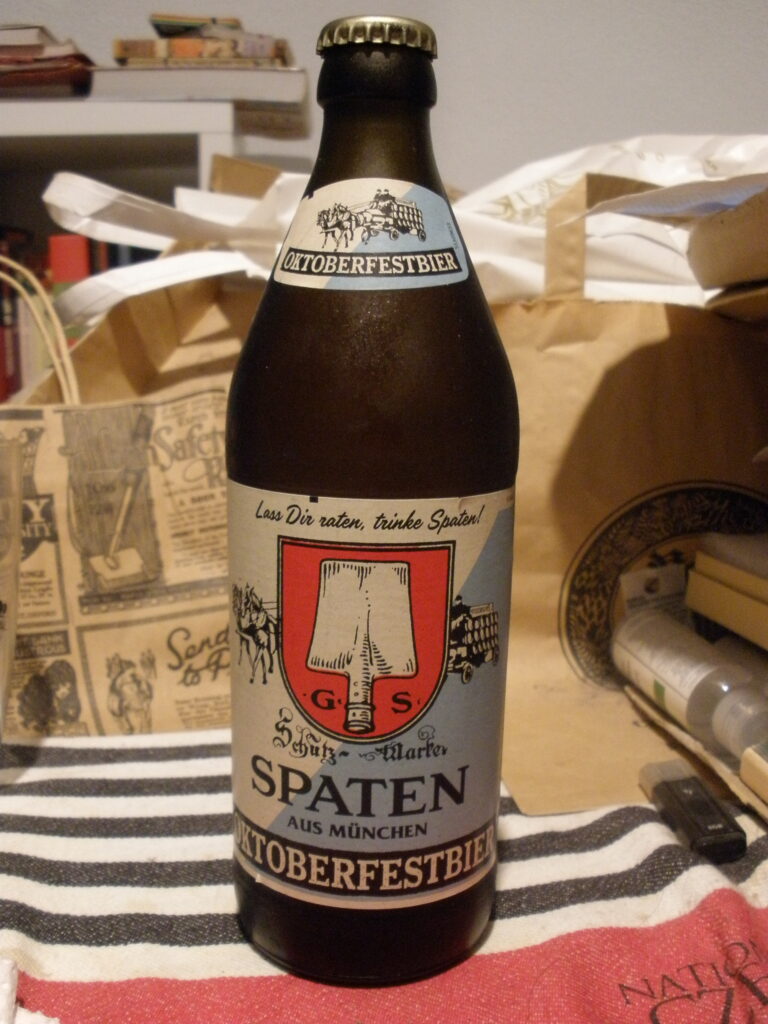
It’s a much lighter straw color than the bock, on par with a couple of the other festbiers. Fluffy head and lively bubbles show the party is ready to start. I struggle to get much aroma out of it, I think there’s a little lemon in there but that might be the influence of the color, only after some focused sniffing does there seem to be a little bread hovering under the edge of the glass. The rounded maltiness of the bock must be at the forefront of my mind, since I can’t help but think of Spaten Oktoberfest as Bock Lite. It has a similar fresh grain taste right off, descending slowly into something more bitter and typically beery. It doesn’t have as much presence in the mouth as the bock, or even a couple of the other festbiers, but it makes its mark with the flavor. It’s strong and bright, oddly summery on a rainy weekend, and slips away cleanly with practically no aftertaste at all. It’s an especially bright sunset on a festival, and a big contrast to the coming months…when we will relish the darkness!
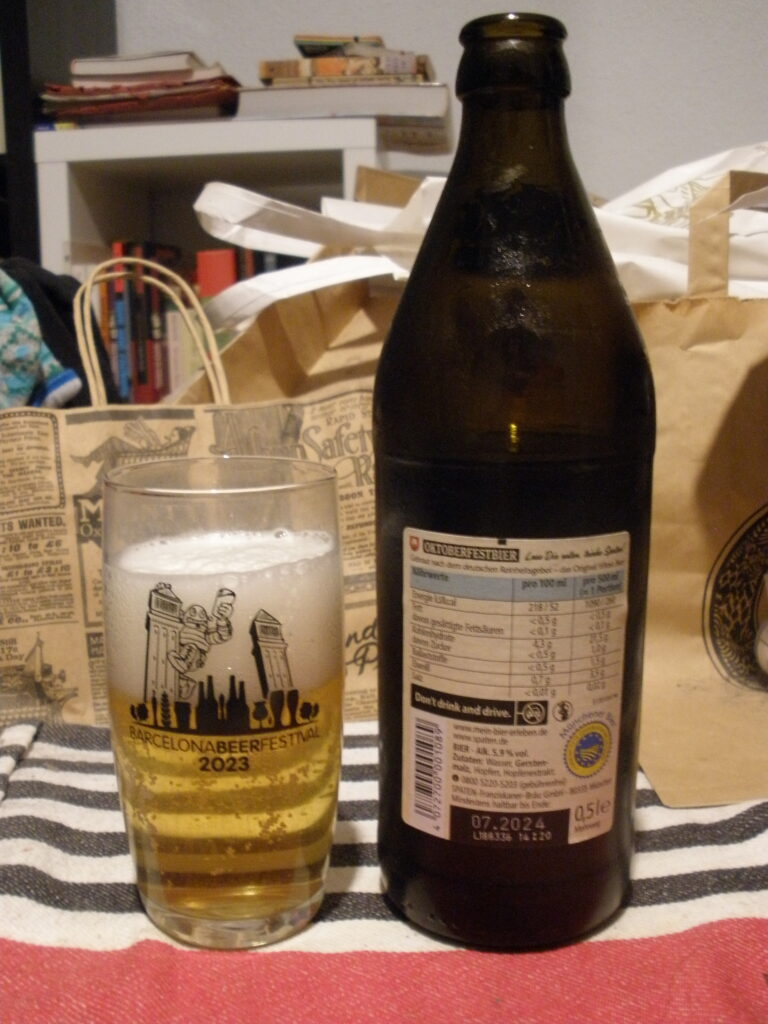
Supplier: Labirratorium
Price: €2.50
